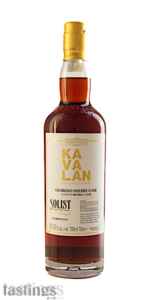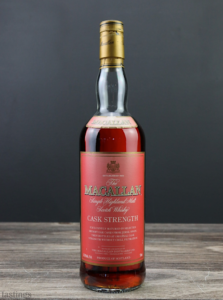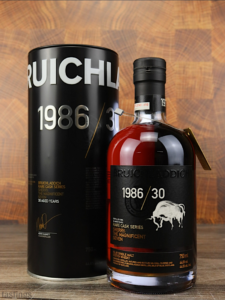A tippling tour through the wonderland of Sherry-finished whiskies
For many lovers of fine Whiskies or luxury spirits of any type, there are few things better than a well-aged Scotch matured in Sherry barrels. The intense aromatics, often redolent with dried red fruits and fudge, exude a certain sumptuousness. Though Cognac had long been the spirited drink of sophisticates the world over, and has regained some of that reputation today, when phylloxera ravaged the vineyards of France in the last quarter of the nineteenth century a considerable hole was left in the global spirits market. Tasting these types of drams, the appeal and transition from Cognac to Scotch becomes quite easy to understand as the natural replacement with fingerprints on consumers drinking preference the world over more than one hundred and fifty years later.
Perhaps this bridge in flavor profile is also what has led Sherry cask matured whiskies to be held as some of the most prestigious Scotch Whisky brands in the world. This hypothesis rings particularly true when you see the bottle prices of finely matured Sherry cask examples in Asia’s premier Whisky markets like Singapore, Japan, Hong Kong, and Taiwan that have also been the primary market for premium Cognac. Because of this association with luxury, one can see examples of sexagenarian Macallan and vintage Yamazaki Sherry Cask Single Malts achieving incredible prices at auction, and Kavalan’s production out of Taiwan has grown to cover a wide range of wine cask aged expressions attuned to the market demand of these palates.
Now part of what made Sherry cask aging appealing more than a century ago was the ease and availability of these casks. Sherry was shipped in cask rather than bottles to the United Kingdom and empty barrels were purchased and refilled quite quickly as the most common oak vessel available in Scotland during this era. Unfortunately, today not too many folks are sipping a Cream Sherry made from Oloroso, much less a fancy Manzanilla, so the input cost of getting high quality European oak Sherry butts (500-liter cask) is cresting. Casting aside the economics of casks for the time being, however fascinating that might be to the minority of us, the impetus behind the philosophizing of potent potables was the partaking in a plethora of magnificently consistent Kavalan single barrel releases.

To pour a glass of Kavalan one cannot help but immediately notice the aromas and color of the whisky; this is a beverage led by barrel characteristics from start to finish. Whiskies’ flavors derive primarily from either the grains, the malting (with or without smoke and peat), fermentation (yeast type, temperature, and duration), distillation (still design and cuts), and cask maturation. So Kavalan exhibits our primary indicator of a Sherry bomb; aroma, flavor, and finish being primarily driven by the oak maturation process. When sipping these single barrel expressions at cask strength, particularly the Oloroso barrel, there is a collective thought in the room of not just any Sherry bombs, but a variation of a melody harkening the long since discontinued Macallan Cask Strength Ten Year.
Purely in the name of science… we have no choice but to scour our spirits archives. With treasured tipple in hand, we pop the cork on a Macallan Cask Strength Ten Year that has been untouched for about a decade and a half. Wow. Powerful, balanced, waves of flavor, lots of Oloroso Sherry, and more cask strength power. This bottle sparks two thoughts. First this recalls a time much earlier than the 2000s when Scotch had much more Sherry aging than the dominant bourbon barrel aging that we see today, and secondly this just holds the alcohol differently than the Kavalan. Delicious, intense, and loaded with far more tropical fruits, the hotter climate and short aging time in Taiwan is unmistakably different. Not inherently better nor worse, more a variation on a similar theme that while akin in quality does not taste the same in execution.

Using Macallan cask strength as our benchmark from 20 years ago when single malts began a precipitous rise to global market dominance, and Kavalan as our benchmark for a modern market entrant into the category provides a solid global perspective. But of course, we can’t leave a good idea and opportunity for tasting Sherry bombs here. We must push on for science! Covering the range from 80 proof to cask strength, we are looking at the majority of the Kavalan range for comparison: Concertmaster Port, Sherry, and Vinho Barrique, Soloist Oloroso, Fino, Manzanilla, Amontillado, Port, Vinho Barrique, Moscatel, Pedro Jiminez, and Brandy, Triple Sherry, and Distillery Reserve Madeira. For Scotch we grab Aberlour 12 YO, 16 YO, 18 YO, and A’bunadh with Macallan 12 YO, 18 YO, 25 YO, and Exceptional Single Cask to further pair with Glenfarclas 12 YO, 17 YO, 25 YO, and 105 and Glendronach 12 YO, 18 YO, and 21 YO. Then there is single barrel Tamdhu cask strength expression from Signatory, with Dalmore 12 YO, Cigar Blend, and Alexander III, to go with Balvenie 12 YO, and 17 YO Double Casks, Glenmorangie Lasanta, Bowmore 12 YO, 15 YO Darkest, and 18 YO, Glenrothes 18 YO, GlenAllachie 15 YO some Highland Park single barrels aged exclusively in first fill Sherry, and last but not least a bottle of Bruichladdich 1986 Rare Cask. For modern domestic entrants we grab some Stranahan’s, Courage & Conviction, and Westland aged in Sherry. With the crown jewel of the tasting being some Yamazaki 2013 Sherry Cask. (Just kidding, we would love to try this example, but even with all our industry contacts don’t know anyone with an open bottle)[1]
Checking in on some domestic sherry bombs we have the Strahanan’s which comes closest to the Scottish style with Westland and Courage & Conviction making excellent entrants into the category while being less overt with the Sherry cask flavor. Altering the sherry bomb outline slightly, as all of the other whiskies are Single Malt, we check in on the Middle West 6-Year-Old Bourbon in Sherry barrels, sweet and very Bourbon-esque, but led by dominant sherry barrel flavors all the same. Not too dissimilar from Angel’s Envy in concept and well worth a try if you enjoy these types of American Whiskies.

Not particularly known for producing Sherry barreled or Sherry finished whiskies, Bruichladdich, can on occasion offer up a Sherry bomb gem. As the internal product story goes the 1986 Rare Cask was the final seven casks of distillate laid down in first fill sherry butts back in 1986 where it remained untouched until 2012 when Jim McEwan has the whisky recasked into Pedro Ximenez butts from Bodega Fernando de Castilla for an additional four years. What could be more Sherry bomb than double Sherry for 30 years? Pop the cork and start pouring, you immediately know this is a serious whisky as the aromatics are easily detected from a meter or more away. Dried black cherries, figs, dates, cocoa nibs, leather, and maduro tobacco exude from the glass and are matched on the palate with a density and richness of figgy toffee pudding topped with candied walnuts. Baked caramel apple, singed salted caramels, black tea leaves, dark chocolate covered orange peels. This also has that old Bruichladdich fingerprint of a mild smokey peatiness that lingers on the palate like a light puff of a finely crafted cigar.
Big picture take aways
Sampling Kavalan one after another and the initial impression is that these younger barrels, aged in the heat just do not hold the higher ABV as elegantly as their Scottish counterparts aged for a decade or two. However, when trying a cask strength Kavalan paired by cask type in between cask strength Aberlour and Glenfarclas, the flavor of the heat becomes more apparent, and the “burn” is not just the prickle of alcohol but a level of spice that the Scotch representatives do not have, and which builds with more sips of the Taiwanese example. So, while the mild weather of Scotland does produce a more round and integrated perception of alcohol, and the Kavalan is a bit more assertive, the climate of Taiwan also imparts these casks with an added barrel spice found nowhere else on a Single Malt of this caliber anywhere in the world.
Whether you grab a bottle of Macallan that was for sale in 1983, 2003, or today the product is great. Macallan has earned their rarified reputation and positioning on the top shelf with an attention to detail and consistency that extends to Highland Park, as well as Glenrothes, and Tamdhu during their watch. Are the stratospheric auction prices justified? That is for the individual to decide should they have that type of money for rare and exclusive items. Sadly, this relentless climb of secondary market pricing justifies the annual increase to flagship products like the Macallan 12 YO and 18 YO making them too expensive for some of their longtime supporters. Folks can argue both sides of the quality to price ratio here, but Macallan’s seat on the mountain was earned.
With Macallan gaining new fans every day, where have the fans of the brand and style from previous decades gone? Obviously, some have moved to Kavalan, and a good many have stayed with Edrington team sipping Highland Park, if they like smoke, or Glenrothes. Others have been chasing Billy Walker’s cask management and passion projects, particularly stops with Glendronach and GlenAllachie. John Grant and his spectacular Glenfarclas somehow manage to fly under the radar, most likely because they are one of the few distilleries that is still family owned and they refuse to beat their chests and bellow, rather preferring that customers serendipitously discover these gems for themselves. Bowmore, like Highland Park caters to a growing niche that likes smoke and Sherry cask aging. While Aberlour and Balvenie go along being excellent yet playing little brother to their partner distilleries Glenlivet and Glenfiddich; a shame, because both brand portfolios are both rich in history and flavor, built for more serious consideration. Value again is in the eye of the purchaser, but every one of the aforementioned brands has been found guilty of making our wallets lighter and found a home in our personal collections.
Last but not least, if you don’t immediately like your wine cask aged whisky, let it stay in your glass for a few hours, and let your newly opened bottle sit on the shelf for eight to twelve weeks. The issues of sulfur, used as a preservative in for shipment of Sherry and wine casks are lessened from a few years back, but they are still present, and many distilleries keep casks for several decades. Mild, slow aeration will help the off-putting aromas blow off in most cases, as well as often bitter oak tannins. In more extreme cases you can attempt to save a bottle by dropping in an old clean copper penny… there really is some science here. Not every brand nor bottle will be great, but a little patience and information can hopefully improve a few. Slàinte Mhath!
[1] Though using archival samples with historic scores, and spitting alcohol to remain lucid, we are also using samples from our personal collections. This is a comparative tasting to inform curious minds and contextualize the spirits against a historic global market. This does not reflect the annual product reviews and scores conducted in laboratory conditions at the Beverage Testing Institute.

